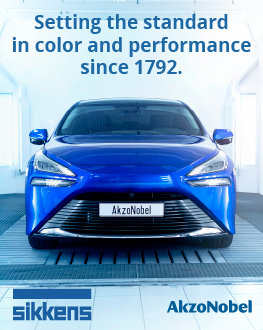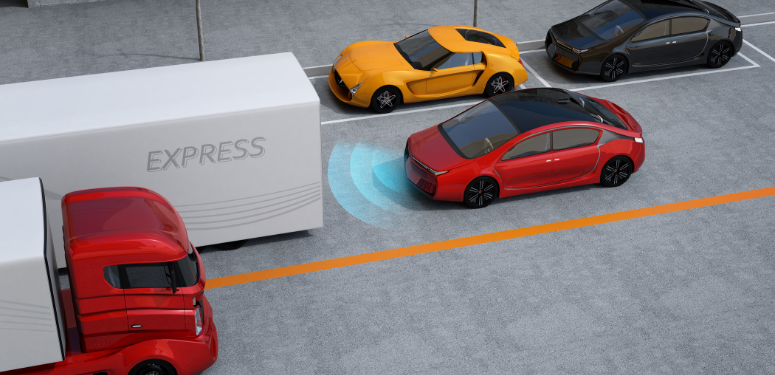By Jeff Sanford
Toronto, Ontario — February 5, 2018 — In this week’s Autonomous Report, the Senate of Canada releases a major report on automated vehicles.
Several of this week’s news reports covered a 78 page report from the Senate of Canada on self-driving vehicles released by the Standing Senate Committee on Transport and Communications. It was presented at a press conference by Sen. Dennis Dawson, a co-chair on the committee, and Patricia Bovey, deputy chair. The Senators interviewed 78 witnesses over 30 meetings and received numerous written briefs. Witnesses included government representatives from both Canada and the United States, as well as representatives from industry associations, civil society and academia. According to the Senators:
“Canada is ill-prepared for the fast-approaching future of transportation.”
“… self-driving transportation could take root in urban areas in as few as 10 to 15 years.”
“This could herald the beginning of a new age of transportation, where, for instance, the nearly 1,700 road deaths and 117,000 injuries that occurred in 2015 because of human error become grim relics of a primitive past…”
One witness, Patrick Leclerc, president and CEO of the Canadian Urban Transit Association, was quoted as saying, “… empty self-driving cars returning home or going to pick up other passengers could create ‘a new type of traffic called zero occupancy vehicles.’”
The report also called witnesses who explained to the committee that there are two types of connected technologies in the automotive sector: consumer conveniences and infotainment from vehicles connected to the Internet (typically through the same mobile network as smartphones), and vehicle-to-vehicle (V2V) and vehicle-to-infrastructure (V2I) communication, over dedicated short-range communications (DSRC) systems. According to the senators the government has set aside the 5.9 gigahertz (GHz) wireless spectrum for DSRC systems.
A witness from BlackBerry explained that there is an ongoing debate about whether DSRC or 5G cellular networks are optimum technologies to use for connected vehicles. However, Sandeep Chennakeshu, president, BlackBerry Technology Solutions, suggested that there will likely be a mix of the two technologies: DSRC works well for short-range applications, whereas 5G cellular networks are ideal for applications that require a wide range of coverage.
Also testifying was Ross McKenzie, managing director, Waterloo Centre for Automotive Research. He suggested that an AV that will transport people within a city could be 10 to 15 years away, but an AV that will transport people between cities is likely 20 to 30 years away. Todd Litman, executive director, Victoria Transport Policy Institute, explained that it will likely be in the 2040s or 2050s when middle-income families can afford AVs that can operate in all conditions, and even longer before low-income families can afford such vehicles. According to the committee report, AVs may first be deployed as fleets, which may allow a wider range of people to access them via automated taxis or buses. Witnesses further explained to the committee that the turnover of the vehicle fleet is typically a slow process.
Blake Smith, director of sustainability, environment and safety engineering, Ford Canada, suggested that eight percent of the vehicle fleet changes in a typical year, with the average age of a Canadian vehicle currently sitting at ten years of age. George Iny, director, Automobile Protection Association, told the committee that other automotive technologies, such as air conditioning and automatic transmission, have taken 12 to 30 years to make their way into half of the vehicle fleet. Given the high costs that AVs are likely to have when they are first deployed, some witnesses cautioned that deployment of this technology may start off slower in rural areas, due to the lower population density over which to spread those costs than in urban areas.
The committee provided some interesting stats and commentary on the improved safety record of the car industry over time. In 1984 Canadian roads bore witness to a staggering 4,120 fatalities and 237,455 injuries whereas, by 2015, these figures had fallen to 1,669 and 116,735 respectively. According to the report, “In spite of this positive trend, much more needs to be done. Road traffic collisions remain the leading cause of preventable deaths for children and teenagers and exert a heavy financial and emotional toll on many families across the country.” The study goes on to say, that, “The sustained decline in fatalities and collisions over the past four decades can be attributed to a combination of factors, including industrial innovation (e.g., the development of airbag technology) and government action (e.g., the introduction of provincial legislation requiring all vehicle occupants to wear seat belts). The advent of AV and CV technologies provides further opportunities for industry and government to greatly advance road safety.
Today, as many as 94 percent of traffic collisions are caused by human error and poor decision-making; however, as AV and CV technologies assume an increasing number of driver functions, the significance of human fallibility will decline dramatically.” Witnesses told the Committee that AV and CV technologies would not completely eliminate road traffic accidents, they are nonetheless expected to bring about significant reductions in the number of collisions on Canadian roads.
The report also touched on the potential for job losses. Many have worried that truck drivers will be out of work. Not so according to one witness, who suggested that driving is only part of a truck driver’s job. Marco Beghetto, vice president of communications, Canadian Trucking Alliance, testified that a truck operator is required to do much more than just hold a steering wheel. Among other things, they control access to the vehicle, maintain security, balance loads, secure cargo, manage transportation of dangerous goods, communicate with first responders, conduct pre-trip inspections, perform en route mechanical tasks, communicate with customers and deal with the myriad of border crossing processes. In other words, witnesses from the trucking sector suggested that there will always be a role for a human driver in trucks. The driving will become safer, and will be assisted, but the role of that truck driver will likely evolve as ADAS technologies are increasingly added to these vehicles.
You can find the online version of the senate’s report here: http://bit.ly/2GwHvO2.







































